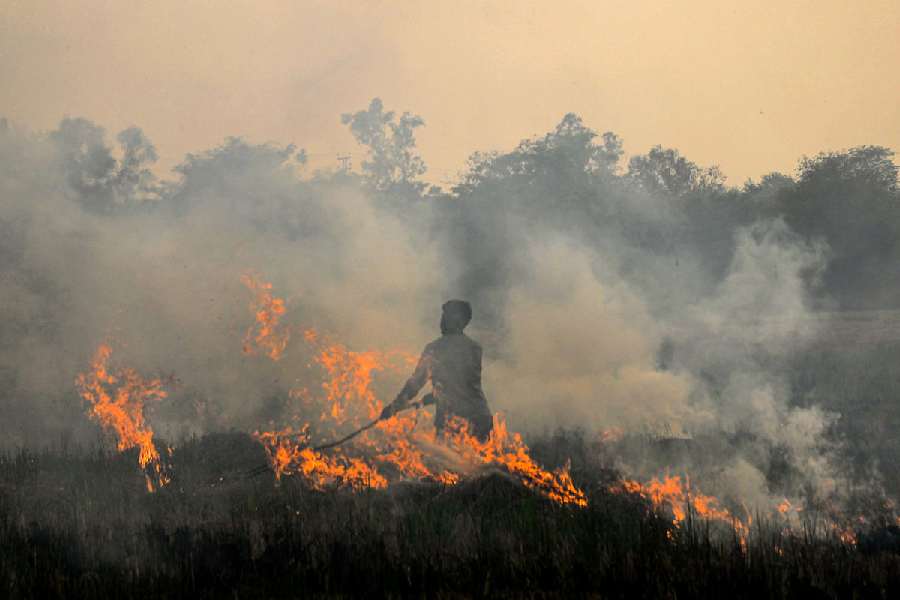Punjab on Monday reported over 2,000 farm fires even as many parts of Haryana saw air quality indices in the 'severe' and 'very poor' categories while it was 'poor' in areas of the border state.
As farmers continued to set crop residue ablaze, 2,060 fresh stubble-burning incidents were recorded in Punjab, taking the total number of such cases to 19,463 till Monday, according to Ludhiana-based Punjab Remote Sensing Centre data.
Stubble-burning incidents reported from November 1 till November 6 constitute 61 per cent of the total such cases in the current season, as per the data.
The total stubble-burning incidents of 19,463 registered from September 15 till November 6 was 35 per cent less than 29,999 such cases in the corresponding period last year, the data stated.
The state had reported 32,734 farm fires during the same period in 2021.
Out of 2,060 stubble burning incidents reported on Monday, Sangrur continued to top with 509 such cases, followed by 210 in Bathinda, 195 in Mansa, 189 in Barnala, 122 in Faridkot and 110 in Moga.
On the same day in 2021 and 2022, the state had seen 3,942 and 599 active fires, respectively.
Out of a total of 19,463 farm fires reported this year till now, Sangrur topped the list with 3,207 stubble-burning cases, followed by 1,976 in Ferozepur, 1,809 in Tarn Taran, 1,451 in Mansa, 1,439 in Amritsar, 1,350 in Patiala and 1,086 in Bathinda.
Meanwhile, Haryana's Fatehabad recorded an air quality index (AQI) of 425, followed by Faridabad at 412, Sonipat at 412, Jind 385, Hisar 380, Gurugram 376, Kaithal 370, Narnaul 340, Bhiwani 334, Rohtak 326 and Sirsa 308.
In Punjab, Amritsar reported an AQI at 329, followed by Bathinda at 297, Ludhiana 283, Mandi Gobindgarh 266, Jalandhar 231, Khanna 228 and Patiala 220.
Union Territory Chandigarh, the joint capital of Punjab and Haryana, saw an AQI of 149.
An AQI between zero and 50 is considered 'good', 51 and 100 'satisfactory', 101 and 200 'moderate', 201 and 300 'poor', 301 and 400 'very poor', and 401 and 500 'severe'.
Paddy straw burning in Punjab and Haryana is considered one of the major reasons behind the alarming spike in air pollution levels in Delhi in October and November. As the window for wheat -- a key Rabi crop -- is very short after paddy harvest, some farmers set their fields on fire to quickly clear off the crop residue for sowing of the next crop.
With about 31 lakh hectares of paddy area, Punjab produces around 180-200 lakh tonne of paddy straw every year of which 120 lakh tonne was being managed through in-situ (mixing crop residue in fields) and around 30 lakh tonne ex-situ (using stubble as fuel) management methods.
The state recorded 49,922 fire events in 2022, 71,304 in 2021, 76,590 in 2020, 55,210 in 2019 and 50,590 in 2018.
Except for the headline, this story has not been edited by The Telegraph Online staff and has been published from a syndicated feed.











